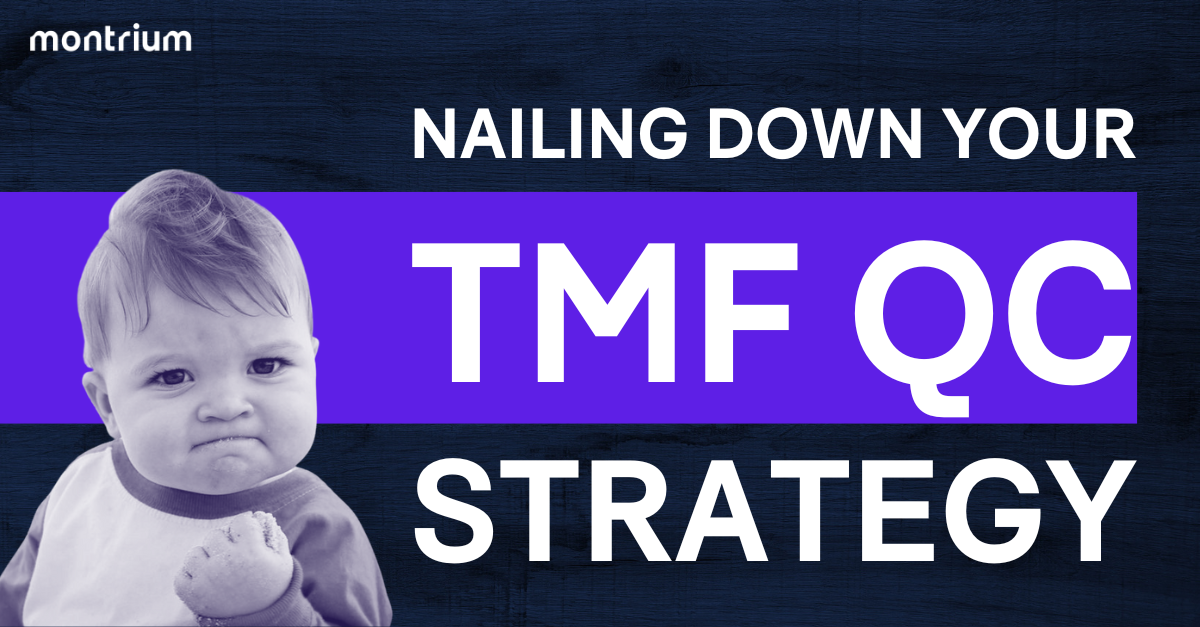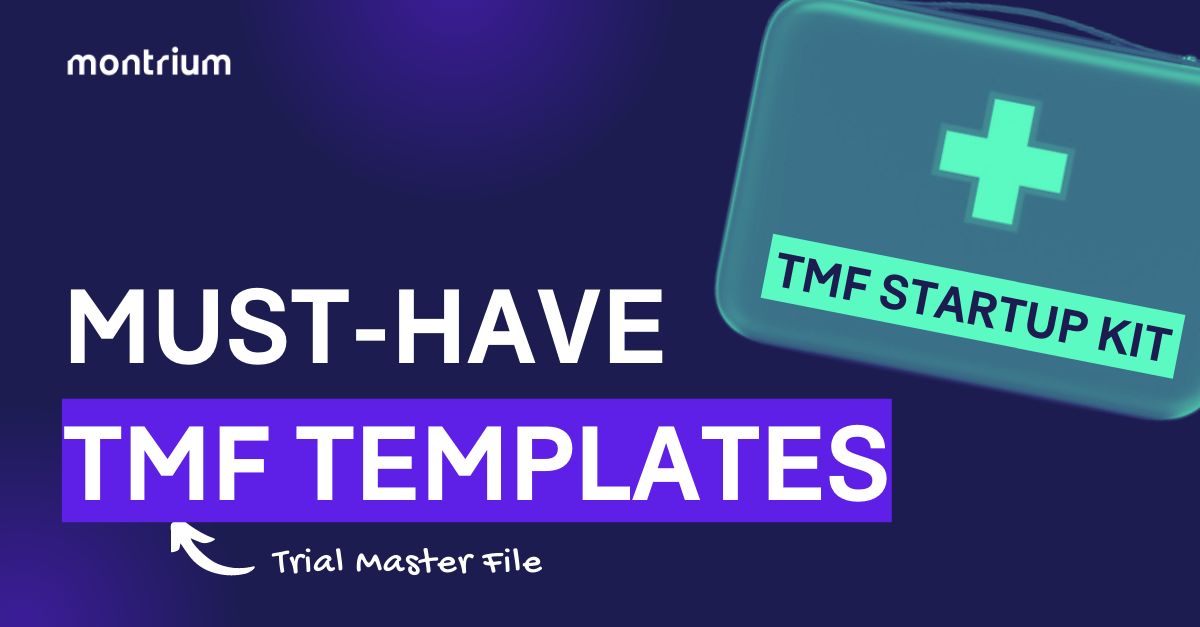.jpg)
The clinical trials landscape has fundamentally shifted. With ICH E6(R3) now requiring risk-based approaches across all aspects of clinical trial management, TMF teams can no longer rely on traditional 100% oversight models.
Implementing risk-based TMF oversight can feel like jumping out of a plane without a parachute. But the reality is, you already have the parachute—you just need to learn how to deploy it properly.
Unfortunately, there’s not much guidance out there, and because of this, I receive many (many) questions from clients and the community on the best approach to take. Where to start. Who is responsible for creating it. What inspectors are really looking for...
That's why I decided to compile all the great questions I have been receiving and share my responses with the larger community in the event you have the same questions, but aren’t sure who to ask.
What does risk-based TMF oversight change for TMF?
Risk-based TMF oversight isn't an extra layer of work—it's a smarter approach to the work you're already doing. The reality is we can't check 100% of all documents in the TMF. We don't have the resources or time, so we need to establish priorities.
Think of it like having multiple overlapping meetings in a day. You can't clone yourself to attend two meetings simultaneously, so you prioritize. The same logic applies to TMF oversight. We need to understand what's critical to TMF quality and focus our efforts there.
When applied properly, a risk-based approach reduces low-value activities and helps study teams become more efficient. It's about choosing the most important work to do, not adding more work to your plate.
How do TMF teams define high-risk vs low-risk content?
The fundamental question to ask yourself is: "What could go wrong and what is the impact on data integrity and patient safety?"
High-risk content directly impacts patient rights and safety. For example, consent forms represent high-risk documents—if they're not properly signed or translated, this creates significant regulatory risk.
Low-risk content might include newsletters or administrative communications.
While important for the overall trial story, missing these documents doesn't impact study data or patient safety. A missing newsletter is a compliance issue, not a safety issue.
To help teams understand this concept, consider reading a book. You can skim certain pages and still understand the full plot. Some pages are more critical to the story (high-risk), while others are less essential (low-risk).
The key is implementing a risk assessment process, even if it's not perfect initially. Inspectors want to see that you took time to develop a strategy. You can start and improve over time as your understanding of risk evolves.
You can learn much more about mapping high and low risk artifacts in our free Risk-Based TMF Management Framework.
Which TMF documents and milestones do regulators scrutinize most?
Unfortunately, there's no universal checklist that competent authorities provide. However, you can review GCP inspection reports available online to identify focus areas, particularly documents that directly impact data reliability and patient safety.
Inspectors typically concentrate on documents supporting critical decisions—site activation, first patient enrollment, safety evaluations, or database lock documentation.
In my expert opinion, the top three areas inspectors scrutinize are:
- Investigational Medicinal Product (IMP) management
- Pharmacovigilance
- Site management
More importantly than any checklist, inspectors need to understand the complete story of how the trial was conducted. They look for gaps in the narrative, ensuring the story is complete, consistent, and supported by evidence. The TMF must tell a coherent story where all pieces connect logically.
What proof do regulators expect for risk-based TMF oversight?
Remember the fundamental principle: "If it's not documented, it didn't happen." This applies directly to your risk-based approach.
Inspectors want evidence that you've thought about TMF risk and implemented your strategy.
This includes documentation such as:
- TMF plan
- TMF SOPs
- TMF risk management plan
- TMF risk log
- TMF risk assessment reports
These documents should include risk categories, monitoring frequencies, responsibilities, and mitigation actions. You need to show that you can trace decisions, demonstrate control, and prove that your oversight was informed and active, not passive.
Inspectors want to see proactive prevention of findings based on well-thought-out risk assessments, not just reactive responses to issues.
How can technology support risk-based TMF oversight?
Moving from paper to eTMF systems significantly helps with RBO implementation, though there's currently no "checkbox technology" that performs risk-based oversight automatically.
eTMF systems allow you to analyze data much faster by treating information as continuous data rather than discrete documents. You can leverage metrics around completeness, quality, and timeliness to assess risk—something nearly impossible with paper TMF systems.
While human effort is still required to define processes, technology helps make these processes more effective and faster. The key is defining your strategy for using the data these systems provide.
How can we implement risk-based TMF oversight with limited resources?
Start simple and small. Begin with a pilot project to understand how to implement risk-based approaches, then validate and improve the process. Once you're confident, apply it across the broader study.
Don't attempt to implement RBO across an entire study overnight. Start with a pilot, iterate based on learnings, then scale.
Don't be afraid to make errors—your first risk-based approach won't be perfect, and that's acceptable. The faster you start, the faster you learn. There's flexibility in the absence of rigid guidance, so use that to your advantage.
How can we standardize risk-based TMF oversight across multiple CROs?
This represents one of the most common challenges in modern clinical trials. The solution requires developing a sponsor-driven risk approach framework with a centralized risk assessment strategy.
Key success factors include:
- Define clear expectations in TMF SOPs and TMF plans
- Share KPIs and dashboards for TMF quality, timeliness, and completeness
- Create detailed role and responsibility matrices
We recently helped a sponsor working with three different service providers by developing a comprehensive TMF plan clarifying who does what, deliverables, timeframes, and expected outcomes for each task. Clear documentation prevents the "messy" feeling that comes from multiple stakeholders with different processes and expectations.
How can TMF teams educate cross-functional stakeholders on risk-based oversight?
Education requires practical training and workshops focused on real consequences rather than theoretical concepts.
Use heat maps to illustrate risks and help people understand what high-risk missing records mean to inspectors. Share real stories and experiences often, bringing in external expertise provides credibility and fresh perspectives.
Show stakeholders how inspectors behave and react based on TMF findings. For stakeholders, it might just be a missing document, but for inspectors, it's fundamental to the trial story.
The goal isn't providing fixed guidance but giving teams tools to think about risk systematically.
Does risk-based oversight apply only to TMF, or across all clinical operations?
Clinical operations teams typically conduct trial risk assessments, but often forget to include TMF risk evaluation, or they treat TMF risk as one item among thousands without proper depth.
The problem stems from an insufficient understanding of TMF importance for inspection readiness. Without this knowledge, teams don't allocate appropriate time for TMF risk assessment or understand its significance.
The consequence is misaligned expectations around TMF deliverables and unclear role definitions, resulting in a TMF that isn't inspection-ready.
We need to rethink risk management processes to include TMF and eTMF risks more comprehensively. Sponsors must take responsibility for conducting independent risk assessments rather than relying solely on CRO evaluations.
👉 Sound familiar? You're not alone. Many teams struggle with comprehensive TMF risk assessment. Book a free consultation with me to discuss how our AI-driven approach evaluates TMF risks with the depth your trial deserves.
How does risk-based monitoring (RBM) connect with TMF risk-based oversight (RBO)?
Risk-based monitoring and TMF risk-based oversight are two sides of the same coin. Risk-based monitoring focuses on data quality and site management, while TMF risk-based oversight ensures documents and data reliability support clinical trial compliance.
These approaches should have a bidirectional relationship. TMF tells the story of poor quality and data integrity issues at sites, while risk-based monitoring identifies sites needing increased priority and oversight.
If a site has numerous protocol deviations, serious breaches, or poor GCP conduct, that information directly impacts your TMF risk-based oversight strategy. It's an information exchange where both approaches reinforce each other within a quality-by-design philosophy.
The key is shifting from a passive, archival mentality to active, agile thinking—considering TMF as a data source for understanding trial progress and performance.
How should TMF teams handle risk findings when resources are limited?
First, celebrate that your risk processes are working! They're catching issues before they escalate or before inspectors arrive.
Use your risk approach to prioritize findings. If you can't fix everything, focus on high-risk items first, then medium-risk items.
Even if you can't complete everything before inspection, you'll reduce finding severity by demonstrating due diligence and having a plan in place. You might still receive findings, but inspectors will appreciate seeing your risk-based approach to oversight.
How can TMF teams defend gaps in low-risk areas during inspection?
Transparency is key. If you have clearly defined TMF plans and risk-based processes, you can justify decisions through your documented risk assessment rationale.
I supported a client during an inspection where a low-risk document was missing. The company justified this through their TMF risk management plan, explaining that the record was considered low-risk based on their assessment, so it wasn't prioritized for checking. The inspector accepted this explanation with no finding.
While not all inspectors think identically, having a robust risk assessment process based on solid rationale will never result in critical findings, even if some inspectors might issue minor findings.
Does risk-based TMF oversight reduce inspection risk enough to justify change management?
Absolutely. While implementing a risk-based approach won't eliminate all inspection findings—that's nearly impossible—it will reduce finding severity. You're more likely to receive major or minor findings rather than critical ones.
Risk-based approaches prevent inspection findings or decrease the severity from critical to major, or major to minor. In one case, a sponsor detected late filing of 1572 forms across different sites through risk-based oversight and corrected many proactively, demonstrating transparency and oversight to inspectors.
Risk-based approaches build confidence within internal teams and service providers. The change management investment pays off through higher quality and stronger inspection narratives.
Remember: this isn't optional anymore. Risk-based approaches are now mandatory under current regulations.
How can we get started with risk-based oversight
The clinical trials industry stands at a pivotal moment. Risk-based TMF management isn't just regulatory compliance, it's a competitive advantage for organizations that implement it thoughtfully.
The teams that embrace this shift now, even imperfectly, will develop expertise and confidence that separates them from competitors still struggling with outdated approaches.
The question isn't whether you'll implement risk-based TMF processes, it's whether you'll lead the change or be forced to catch up.
Start with a pilot. Document your process. Learn from your mistakes. Most importantly, start now. The regulatory landscape has shifted, and your TMF strategy must evolve with it.
And if you aren’t sure where to begin, grab a copy of Montrium’s proprietary Risk-based TMF Management Framework. Learn to set the foundations for a RBA, risk scoring, risk-based QA, leveraging risk in TMF oversight, and so much more.
.jpg)
Donatella Ballerini
Donatella Ballerini is the Head of eTMF Services at Montrium. She has over 12 years of experience in the clinical trial space and previously served as Head of the GCP Compliance and Clinical Trial Administration Unit at Chiesi Farmaceutici. She specializes in ensuring the compliance of all clinical operations processes with ICH-GCP and guaranteeing continuous inspection readiness of the TMF.






.jpg)
-1.png)
-1.png)
.png)

.png)



